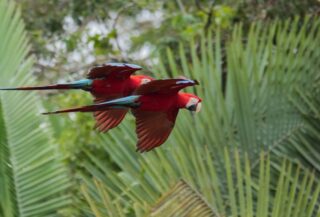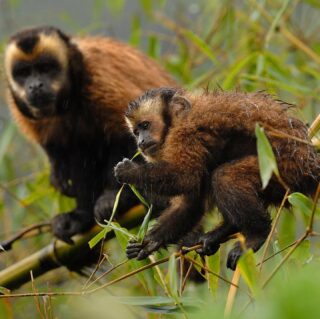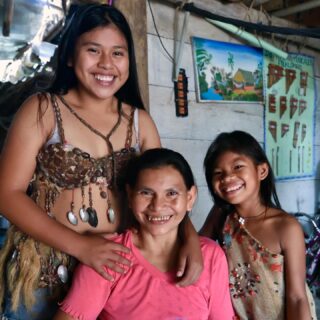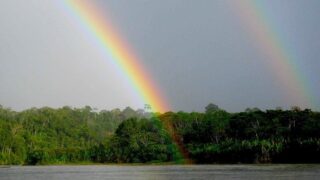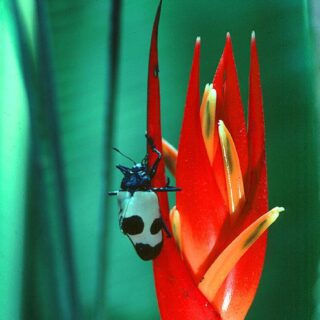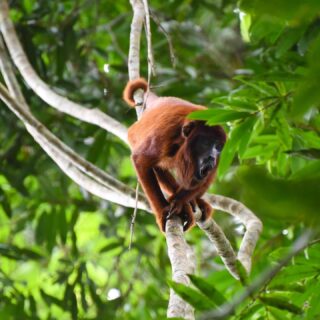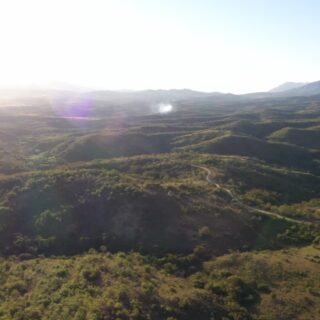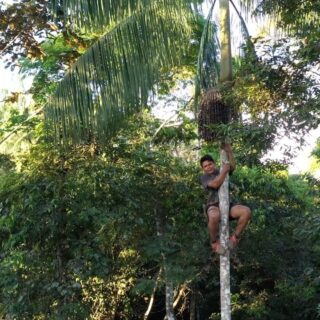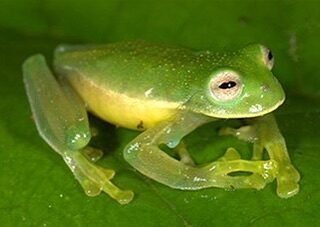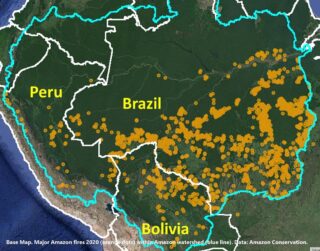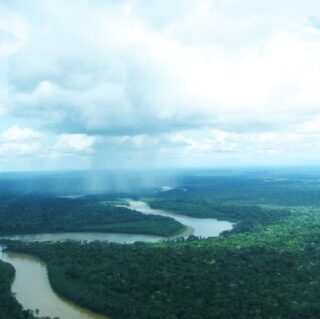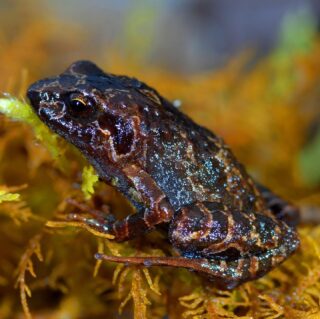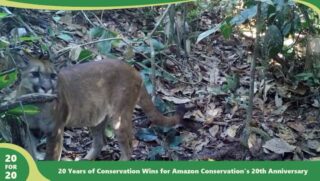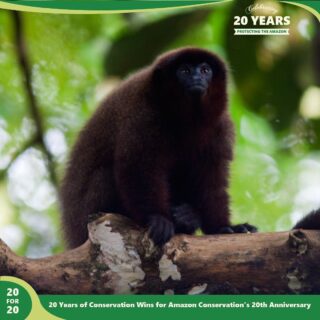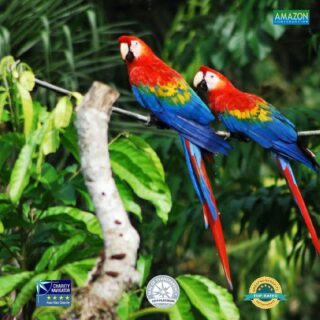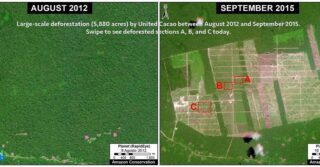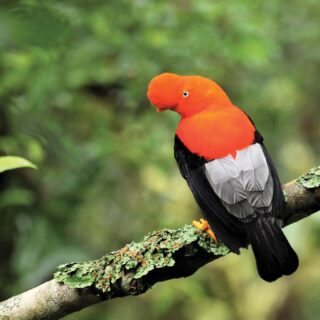Innovating for Conservation: Science in the Heart of the Amazon
December 26, 2024
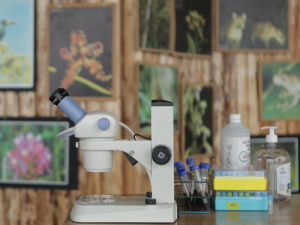 With the end of the year coming upon us, Amazon Conservation is excited to share the discovery of a new species of sandfly identified at our Manu Biological Station in the Peruvian Amazon. This most recent scientific breakthrough reminds us of the groundbreaking research and innovation taking place in the heart of the Amazon, showcasing the critical role of biodiversity and science in addressing global challenges.
With the end of the year coming upon us, Amazon Conservation is excited to share the discovery of a new species of sandfly identified at our Manu Biological Station in the Peruvian Amazon. This most recent scientific breakthrough reminds us of the groundbreaking research and innovation taking place in the heart of the Amazon, showcasing the critical role of biodiversity and science in addressing global challenges.
From uncovering new species that expand our understanding of tropical ecosystems to developing advanced technologies for tracking wildlife and monitoring diseases, our work highlights the essential connection between conserving the Amazon and protecting human health. As we celebrate innovation for conservation, we want to underscore how these efforts safeguard not only the Amazon and the planet’s health, but also our own individual health as humans. With your support, we can continue to drive these essential initiatives forward for the benefit of all.
A Remarkable Discovery: Trichophoromyia macrisae
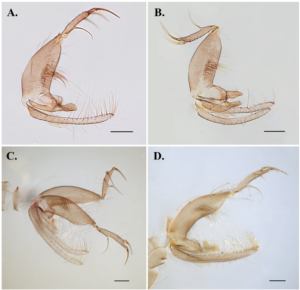 In the depths of the Amazon rainforest, at the Manu Biological Station in southern Peru, researchers uncovered a new species of sandfly, Trichophoromyia macrisae. This remarkable discovery adds to the 47 species of the genus found across the Americas, 15 of which can be found in Peru.
In the depths of the Amazon rainforest, at the Manu Biological Station in southern Peru, researchers uncovered a new species of sandfly, Trichophoromyia macrisae. This remarkable discovery adds to the 47 species of the genus found across the Americas, 15 of which can be found in Peru.
Sandflies are known transmitters of Leishmania, the parasite responsible for leishmaniasis, a disease that poses a significant public health challenge in tropical regions. By identifying and studying this new species, scientists gain critical insights into local transmission dynamics–the analysis of the rate and pattern of a disease spreading in a population–ultimately informing prevention strategies and public health policies.
This recent discovery, made possible thanks to support from the International Conservation Fund of Canada, is just one example of the innovative conservation research taking place at our biological stations in Peru that helps inform local and global human health. This type of analysis demonstrates valuable information around the intersection of biodiversity and human health, where protecting ecosystems also protects lives.
Pioneering Conservation Technology at Biological Stations in Peru
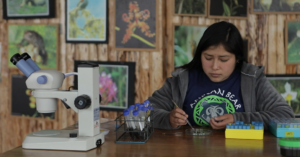 Similarly, at our state-of-the-art Wildlife Conservation Laboratory at our Los Amigos Biological Station in the Peruvian Amazon, scientists conduct cutting-edge research on advanced wildlife genomics and monitoring of key species right in the heart of the Amazon without the delay, cost, and complications of transporting samples to bigger labs.
Similarly, at our state-of-the-art Wildlife Conservation Laboratory at our Los Amigos Biological Station in the Peruvian Amazon, scientists conduct cutting-edge research on advanced wildlife genomics and monitoring of key species right in the heart of the Amazon without the delay, cost, and complications of transporting samples to bigger labs.
To achieve this, some of the scientific activities carried out at the Laboratory include sample bio-banking, expanding biological archives for the Amazon rainforest, conservation genomics, safe pathogen screening, and toxicology monitoring of key Amazonian species. These innovations enable targeted biodiversity monitoring that not only enriches our understanding of the Amazon’s unique ecosystems but also plays a crucial role in mitigating zoonotic disease risks.
Following the height of the COVID-19 pandemic, zoonotic diseases—those that jump from animals to humans—have become a growing global concern. By studying the intricate relationships between wildlife, pathogens, and their environments, we are helping to identify potential transmission hotspots and support government health agencies in designing preventive measures. This science is essential for protecting local communities and, in our interconnected world, people everywhere.
Support Innovation for Global Health Today
Join Us in Innovating for Conservation and Global Health
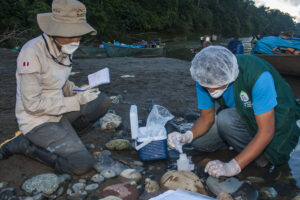 Scientific exploration and innovation are at the heart of effective conservation. The discovery of Trichophoromyia macrisae and the groundbreaking research taking place at our biological stations illustrate the profound impact of research and its ability to drive meaningful change. However, these advancements are only possible with the support of individuals like you.
Scientific exploration and innovation are at the heart of effective conservation. The discovery of Trichophoromyia macrisae and the groundbreaking research taking place at our biological stations illustrate the profound impact of research and its ability to drive meaningful change. However, these advancements are only possible with the support of individuals like you.
Your contribution helps us fund valuable research and maintain cutting-edge facilities like the Wildlife Conservation Laboratory that provide new data and analysis to inform public health strategies and enable us to better understand and predict future health crises.
By supporting Amazon Conservation, you’re not only conserving the Amazon’s unparalleled biodiversity but also fostering discoveries that protect human health and well-being.
Together, we can ensure that the Amazon remains a source of life, innovation, and hope for generations to come. Let’s create a healthier future for the Amazon and for the whole planet.

